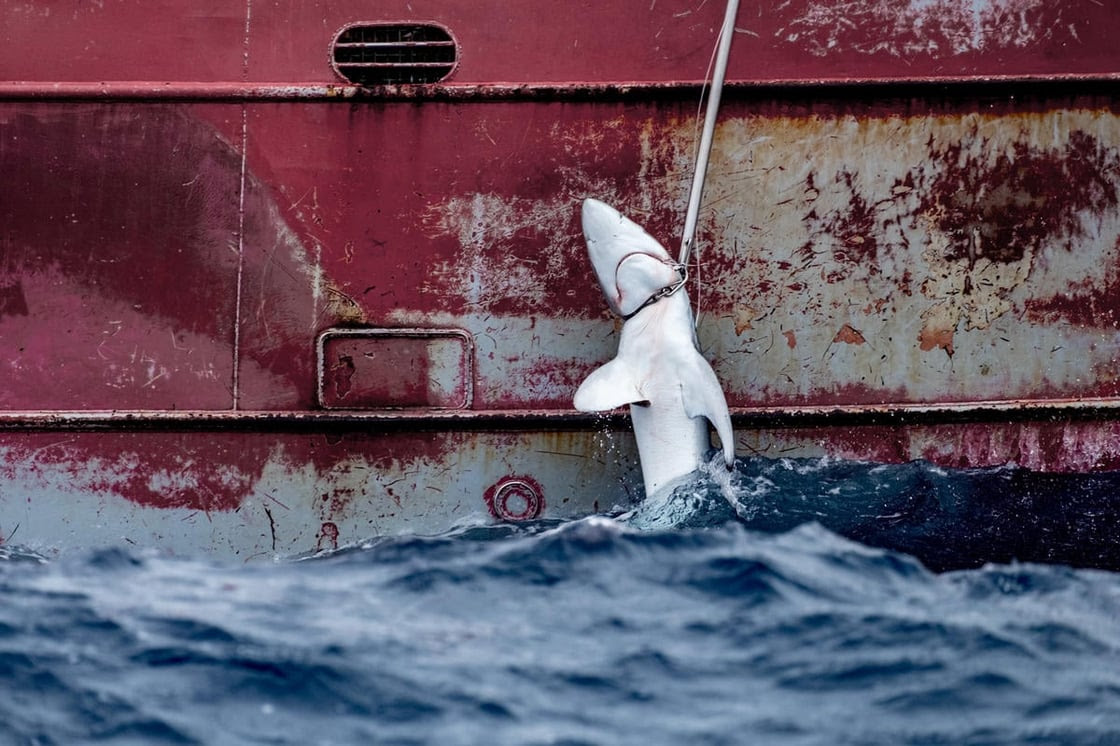comprehensive analysis Published by Greenpeace on threats to the oceans. The study includes up-to-date data on overfishing, pollution and projected impacts of deep-sea mining, and outlines a policy roadmap for saving marine life. The green organization is international In the petition Calls on countries to immediately ratify the United Nations Convention for the Protection of Oceans and designate marine protected areas. Greenpeace is a two-minute animated film starring Jane Fonda, Camila Cabello, and Simon Pegg short film It was also photographed showing the destruction of marine life.
Green area Stady In addition to recent data reflecting the state of the oceans, it also contains a policy roadmap on how to declare 30 percent of the world’s seas protected by 2030 (that’s the UN’s 30 x 30 target) under the Oceans Convention, which World leaders agreed in March.
The introduction to the report was written by Professor Callum Roberts, whose pioneering modeling methods were used in the report published by the Green Organization in 2019. 30×30 ocean protection chart His study. The new analysis describes in detail the threats to the oceans, and also includes up-to-date data on the evolution of open-sea fishing. Accordingly, between 2018 and 2022, time spent fishing in our open waters has increased by 8.5 percent to nearly 8.5 million hours, and this figure is also 22.5 percent higher than before in protected areas. Thus, the trends show that the exact opposite of what is defined in the UNFCCC is happening in reality.
photo_camera
According to the study, between 2018 and 2022, time spent fishing in our open waters increased by 8.5 percent to nearly 8.5 million hours, and this number is also 22.5 percent higher in protected areas than before.
Photo: Tommy Trenchard/Greenpeace
In addition to fishing trends, the report also shows how rising ocean temperatures, acidification and pollution are putting an increasing burden on marine life, and makes clear that politicians must act now.
Chris Thorne, marine campaigner at Greenpeace, said:
“The Convention to Protect the Oceans was a historic victory for nature, but as our report underscores, the threats to marine life are getting worse every day. The Convention is an effective tool to protect our oceans, but only if governments urgently ratify and put it into action. They must also put Protected areas where marine life can recover and thrive.”
Currently, less than 1% of the open seas are adequately protected, and to protect 30% of the world’s oceans by 2030, approximately 11 million square kilometers of marine areas must be protected from destruction every year.
Highly protected and protected areas identified on the basis of the United Nations Convention on the Protection of Oceans will be a solution to the sea crisis. They provide a safe haven for marine life and help restore fish stocks.
On the basis of their environmental importance, Greenpeace proposes to declare three designated open marine areas as protected first: located in the northwestern part of the Pacific Ocean Lower Emperor Heightsthe Sargasso Sea And between Australia and New Zealand Lord Howe– Good.
“Maybe there are those who think that Hungary does not have a sea, so there is no reason to have a say in political decisions regarding the seas. But that is not the case at all. We owe every second breath to the oceans, because half of the oxygen is provided by small plants in the seas, Which is called what is produced by phytoplankton. Sea pollution is not independent of us either. 80% of plastic waste enters the seas from within the Earth through rivers and winds. Katalin Rudix, an expert at Greenpeace, said: “The Danube River, for example, transports 4.2 tons of Plastic waste into the Black Sea every day.
Source: Greenpeace
Related articles about Qubit:












































